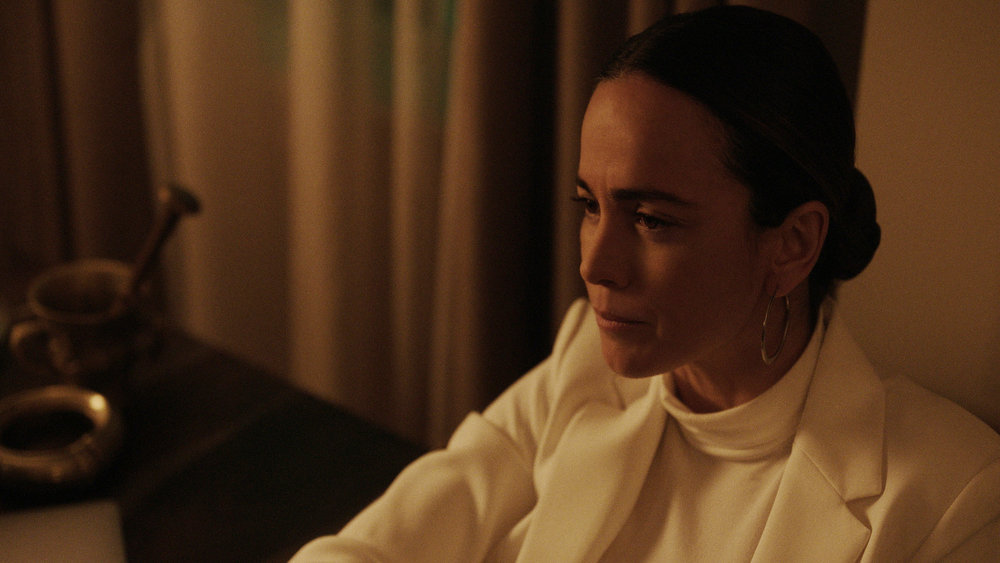“Queen of the South” airs its final episode on the USA Network on June 9, and with its conclusion goes one of the rare Latina shows on TV. For the last two seasons, Cuban American Dailyn Rodriguez has been the showrunner, and all along the series has starred Brazilian actress Alice Braga as the Mexican heroine, Teresa Mendoza.
Why does this matter? Well, Latinas (and for those unfamiliar with Spanish, that ending “a” means femme Latinx) are one of the least represented groups on screen, particularly when compared to our numbers in the population. Here are the numbers: according to the U.S. Census, Latinxs are about 20% of this country’s population. But we make up just 5% of television leads according to UCLA’s 2020 Hollywood Diversity Report. And that’s before you layer in gender, where women make up significantly less than half the industry’s ranks. That same pattern holds true for behind the camera (and for critics!) as well.
And when we do get represented, it’s often in stereotypical ways—think silent maids, hypersexual love interests, or drug-slinging criminals. “Queen of the South” undoubtedly falls into that last category as it follows Teresa Mendoza from changing money on a corner in Culiacán, Mexico to running an international cartel from New Orleans, LA. The media’s focus on the drug trade gives the wrong impression about Latinx communities—reinforcing the idea that we’re all criminals, coming to the United States as destructive forces rather than law-abiding families and workers.

That said, “Queen of the South’s” rather singular, Latina perspective allows it to do things other shows can’t or won’t—like exploring the differences between Latinx groups. In this show, there is no pan-Latin American experience. The Cubans are different from the Mexicans, the Colombians are different from the Bolivians and so on. It’s partly accents and fashion—various lisps and dropped syllables in Spanish, crisply tailored button downs for the Cubans in Miami and gaudy prints, leather pants, and big hats for the Mexicans. But it’s also culture, understanding the ways different groups define concepts as varied as strength, loyalty, and family. While some of the in-jokes about specific nationalities may be lost on Anglo audiences, this layering adds richness to the show, the specificity making characters feel like people rather than types.
That attention to differences within Latinx communities is a rarity in U.S. productions to say the least—and it’s not the only or even most conspicuous way “Queen of the South” brings freshness to the overplayed Narcos genre. That honor clearly falls to how the show plays with gender, putting women at its center. A notoriously masculine space, drugs and their corresponding tales generally relegate women to wives and mistresses, not key players. But “Queen of the South” is different.
First there’s Teresa, who starts out in that typical role. In her back story, we learn she was “rescued” from her lowly hustle by a fair-skinned middle-rank cartel member, becoming his well-kept girlfriend in fancy clothes and a lush apartment. The show starts, though, when that boyfriend crosses his bosses and she (along with her best friend, the fabulous Justina Machado) have to flee for their lives. Soon Teresa is fending for herself, literally fighting those who would kill her and also making deals with higher ups in the cartel to assure her safety (and rise through the ranks). In the first half of the show, her largest foe turns out (spoiler) not to be that still-alive ex-boyfriend or the men who want him dead. But rather the woman who helps her survive that first onslaught, Veronica Falcón’s Camila Vargas.

Having these two as the hero and antihero for multiple seasons allows the show to portray Latinas like you’ve never seen us before. While Camila wears the red bodycon dresses we’ve come to expect, Teresa is all black-and-white architectural suits. Both of them are sexy but it is not what they lead with or where they root their power. Likewise, they both struggle with mothering. Camila’s ambition and ruthlessness make it nearly impossible for her to have a meaningful relationship with her teenage daughter. While Teresa’s big heart and will-to-survive find her taking care of her godson Tony. He’s eventually murdered, further showing how family and children do not mix with the drug trade. In most shows, there’d only be one Latina and if there were more, they’d either be a mass of similar, sexy bodies or polar opposites—the mother versus the whore if you will. But “Queen of the South” breaks all those tropes with dynamic, complicated women who can’t be defined by any one thing and who you can’t help but root for even as they do terrible things.
It’s a bit of a revelation, even as it clearly shouldn’t be. Paired with a fast pace, “Queen of the South’s” character development makes the show epically watchable. That it’s also funny and mostly fun helps the gruesome violence from feeling overwhelming. The final season is extremely well done, delivering our characters to their destinations in ways both satisfying and surprising. You see, it’s not just that Latinas are underrepresented, it’s that when we tell our stories, we bring something new: a nuance, an unexamined perspective. “Queen of the South” isn’t a perfect show, but it does demonstrate the value of Latina-centered stories and storytellers. We need so many more like it.












